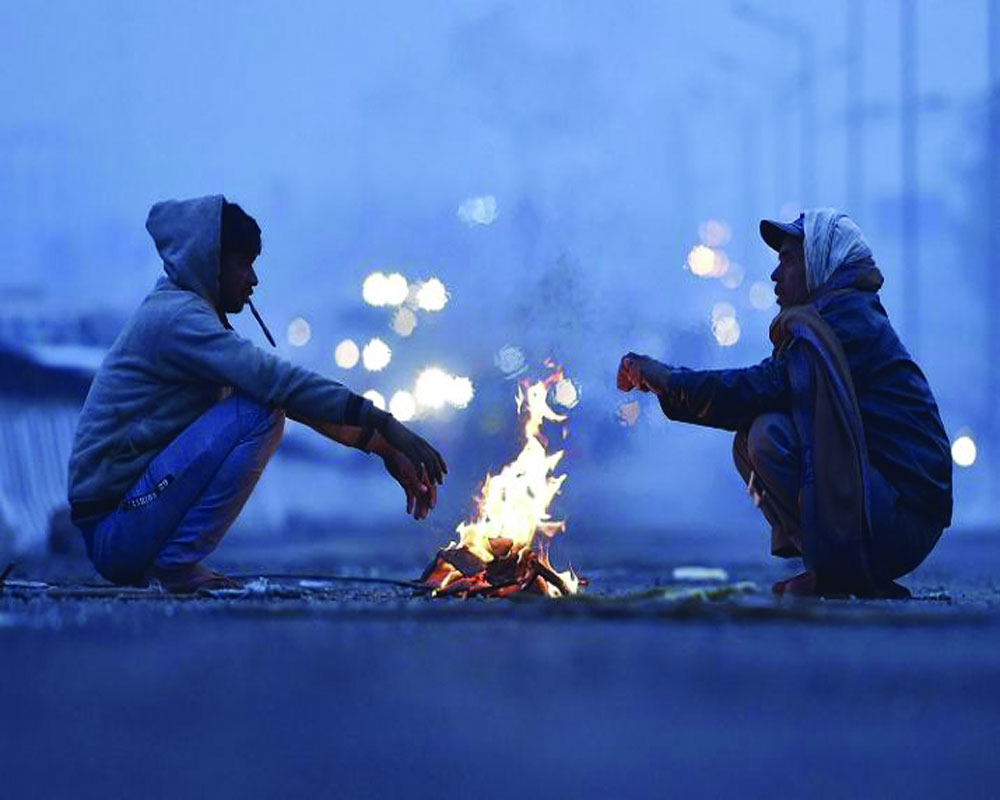Before climate change delivers the fatal blow, India must respond with effective counter-measures to protect lives and livelihoods
As India experiences a colder than usual winter, public opinion is firmly set on the premise that the Coronavirus-driven lockdown reduced pollution levels, thereby resulting in a season that’s more spirited than the previous ones. However, nothing could be further from the truth. The Indian Meteorological Department (IMD) has already sounded an alert to the effect that the winter of 2020-21 will be colder than usual due to the La Nina conditions prevailing in the equatorial Pacific Ocean. La Nina is the cooling phase of the El Nino southern oscillation cycle in the equatorial Pacific Ocean as opposed to the warming El Nino phase. As if confirming the IMD’s predictions, Delhi has already witnessed its coldest November in 71 years. But miseries brought on by the cold may be the least of our concerns compared to the economic impact that lies in wait for India in the wake of these erratic temperature changes.
The IMD predicts an uneven distribution of minimum and maximum temperature levels in various parts of India, which could lead to a higher variance between night and day temperatures. This, in turn, would impact farming in the Rabi season. Especially the wheat crop which is the main cereal that is grown in northern and central India.
Other crops that stand to be impacted are soy and corn. In south India, a major cash crop, coffee, which is extremely sensitive to temperature variations, is expected to suffer unduly thanks to these weather-related anomalies. These developments on the agricultural front can wreak havoc in the form of sudden spike in food prices and cause unexpected financial turbulence for the farming community that is already facing multiple difficulties.
The economy would eventually suffer the ripple effects of the agrarian crisis, the adverse impact of climate change, coupled with setbacks on account of COVID-19.
The latest Mckinsey Global Institute (MGI) report has presented unsettling facts that point towards dwindling economic prosperity due to the havoc unleashed by climate change. The report states that there is a risk of $200 billion to India’s GDP by 2030 due to a sharp reduction in outdoor working hours triggered by the increase in ambient temperatures. What are currently considered as unsafe outdoor temperatures to work in will increase by a whopping 15 per cent by 2030, directly impacting productivity and eventually the per capita income of the nation. This is because outdoor work has immense relevance for the economy. As of 2017, it contributed to nearly 50 per cent of the GDP. It drives 30 per cent of the GDP growth and ensures employment for nearly 75 per cent of the labour force or nearly 380 million people in India. Hence, climate change-driven spike in temperatures can put up to 2.5 to 4.5 per cent of the GDP at risk.
In fact, it is estimated by the MGI report that nearly 160 to 200 million people bear a clear five per cent possibility of being exposed to lethal or fatal heatwaves as early as 2030. As temperatures rise, so do the costs of air conditioning. It is estimated that by 2030, a massive $110 billion would be required as capital costs for improving the air conditioning infrastructure. Urgent remedial measures are needed to avert much of the problems before 2030. Although some situations have surpassed the stage of remedy, all is not lost yet. The authorities must have concerted plans in place that are able to mitigate the forthcoming threats. Gradually shifting of outdoor working hours coupled with movement of capital and labour out of the designated high temperature hotspots will go a long way in reducing the adverse economic impact that is being predicted.
Moreover, all the current ongoing infrastructure and developmental projects must have a critical component of climate change adaptation consideration built into them. This sensitivity will reduce the carbon footprint of these projects and will in turn help avert extreme outcomes in the form of spiraling heat output signatures.
Yet another aspect that needs urgent attention while in the pursuit of ensuring a safe climate for the future is the state of our energy supplies. The average hydel power plant dams that are currently operational in the country are decades old and the constant exposure to the elements, not to mention the ever-present interaction with water, is taking a toll on their structure. The future presents a scenario where rising temperature would mean more melting snows and glaciers, which in turn would increase the water load on these dams. An immediate assessment is required as to how these ageing concrete structures would hold up to this increased onslaught of water and still deliver. This is essential because the need for gradual decommissioning of the coal-fired power plants can no longer be a long-term strategy but is in fact a short-term urgent requirement if the erratic temperatures need to be reined in before 2030. Erratic temperatures are here to stay. But before they deliver the fatal blow, India has to respond decisively with effective counter-measures in order to protect lives and livelihoods.
(The writer is an environmental journalist)


























